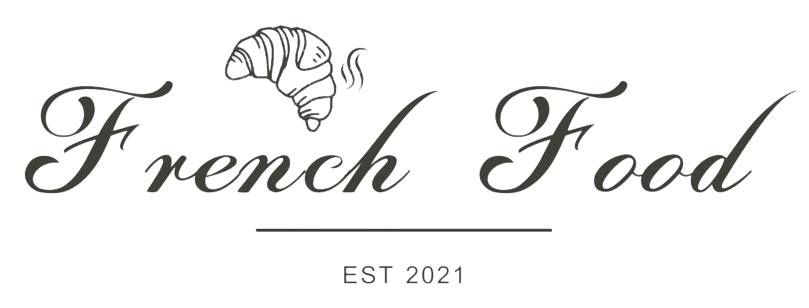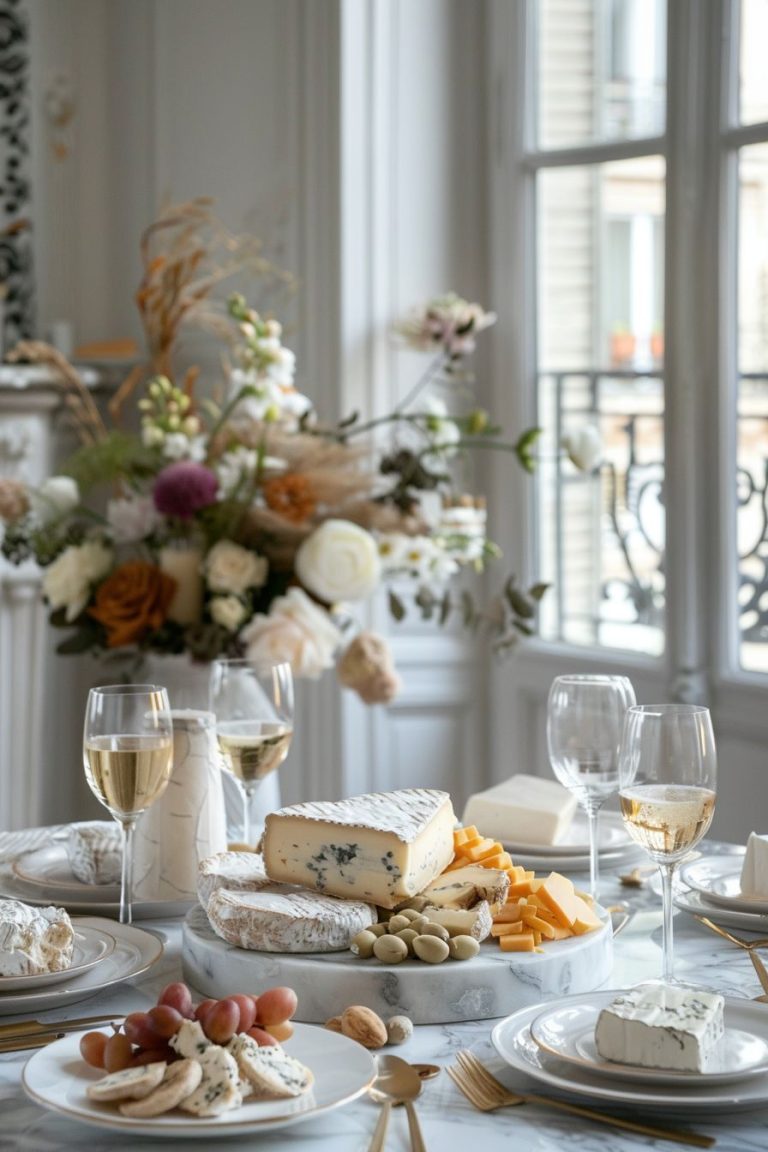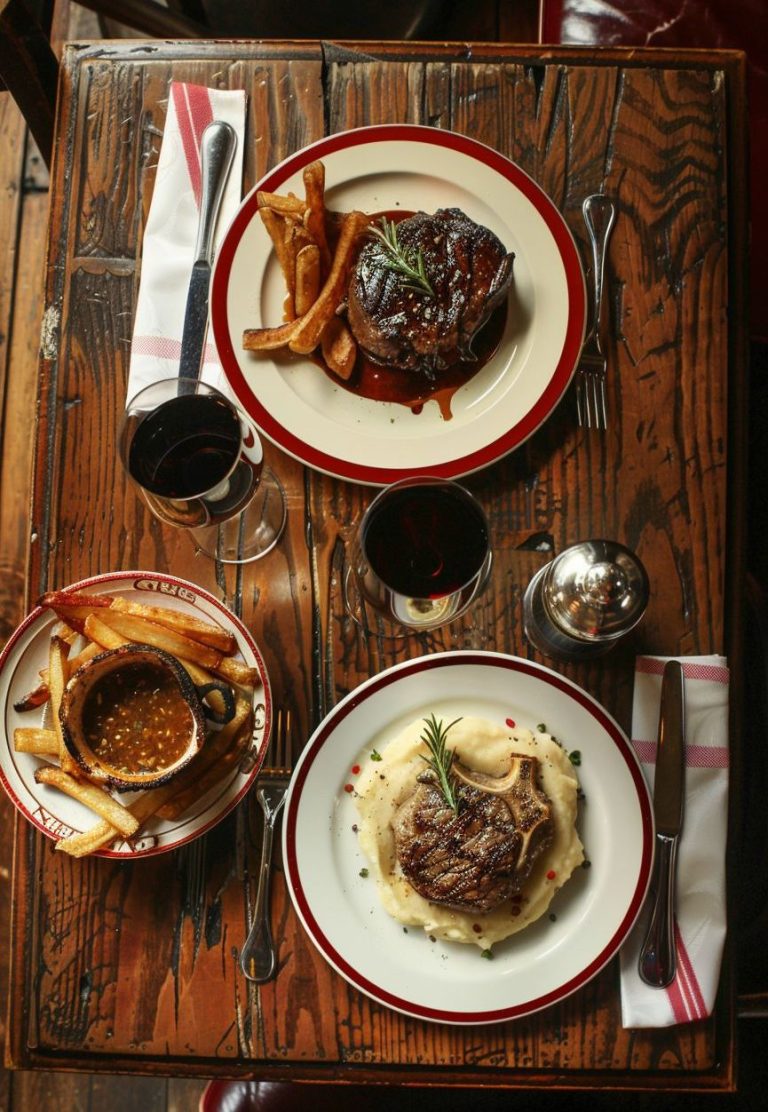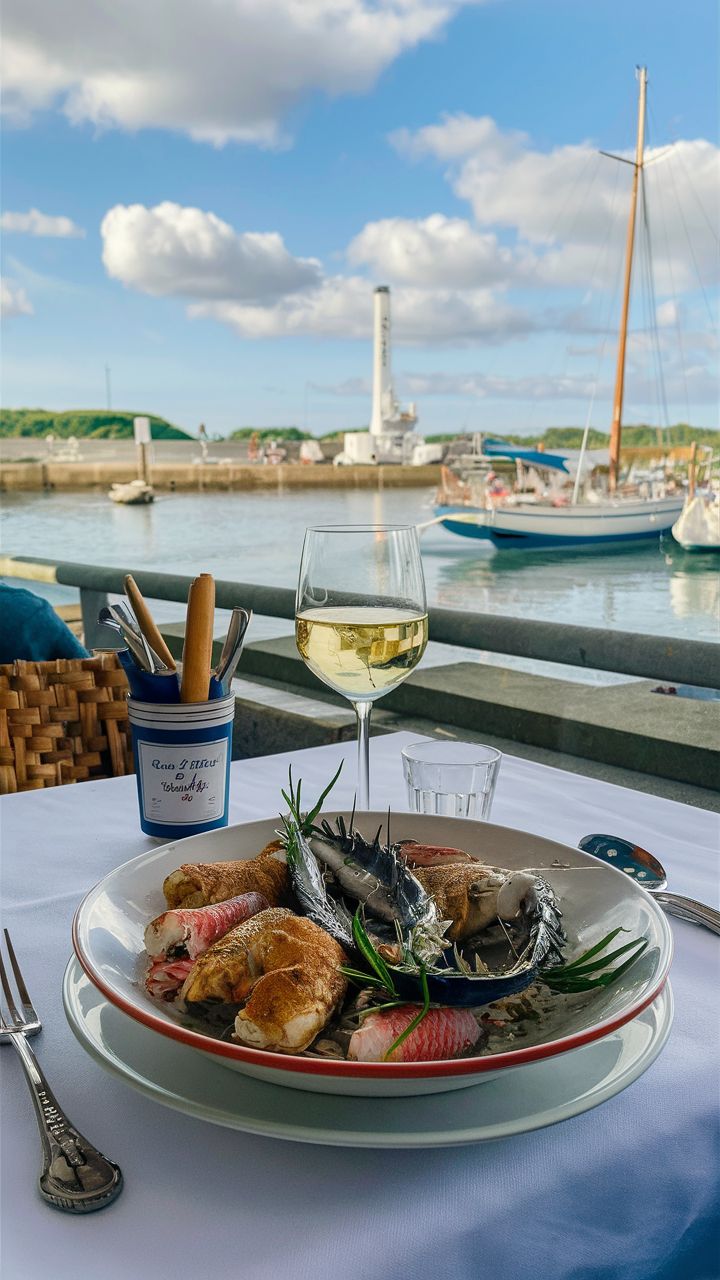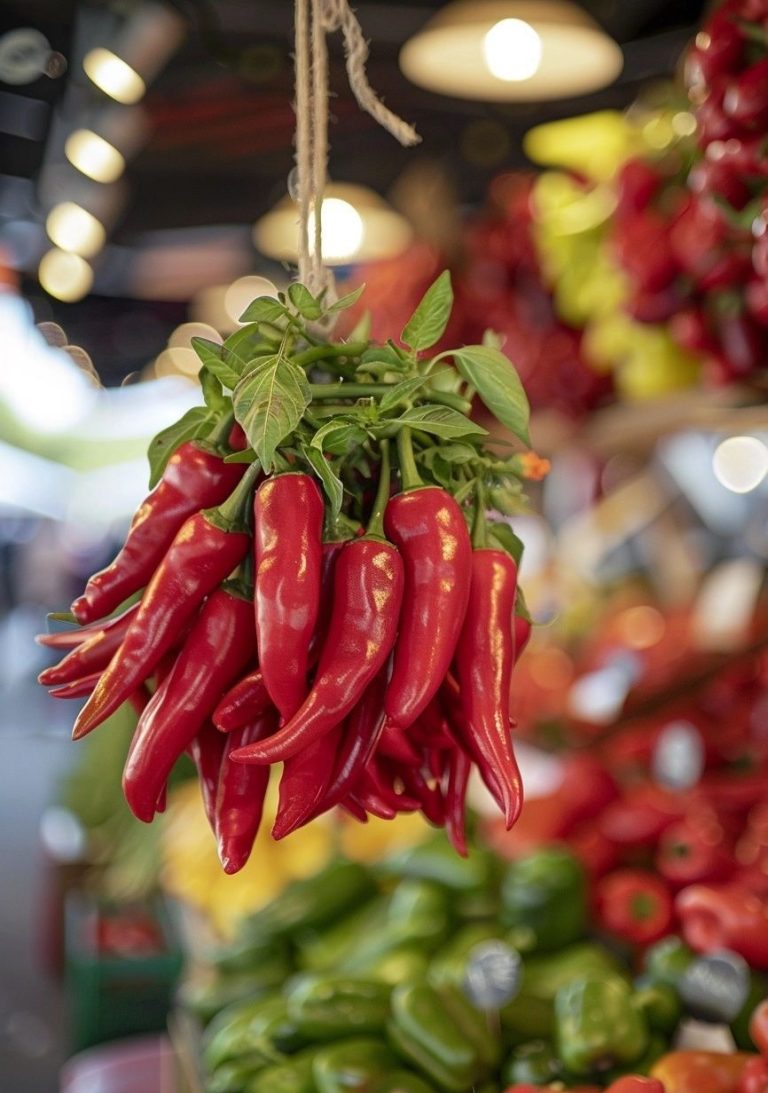Where to Buy Fresh Produce, Fruits, and Vegetables in France
Bonjour and welcome back, mes chéries! As someone who deeply treasures the art of French cuisine, I know firsthand the importance of sourcing the freshest and finest ingredients. Today, I’m excited to take you on a culinary journey across France to discover the best spots for buying fresh produce, fruits, and vegetables, which are fundamental components of cherished French dishes.
It’s no secret that French cuisine prides itself on its distinctive flavors, quality ingredients, and regional diversity. With such a vast gastronomical landscape, sourcing the right ingredients is a culinary quest in itself. Be it the sun-kissed fruits from Provence, the earthy truffles from Périgord, or the crisp endives from the north, each region in France offers a unique bounty that defines its cuisine.
But where can one buy these fresh produce items in France? And what about the quintessential food markets? Whether you’re an avid home cook recreating French classics, a food enthusiast dreaming about strolling through vibrant French farmers’ markets, or someone planning a gastronomical adventure in France, this blog post is for you.
Join me as we navigate through fragrant, bustling farmers’ markets, visit centuries-old shops, and explore online platforms that deliver French freshness right to your doorstep. By the end of this post, you will have a comprehensive guide to the best places for procuring fresh produce in France, and who knows, perhaps even feel a stronger connection to the soul of French cuisine itself.
So, put on your beret, grab a croissant, and let’s jump into this delicious adventure together, mes amies! Bienvenue en France!
Local Farmers Markets
There are local farmer’s markets all across France. Several famous farmer’s markets take place every week in Paris.
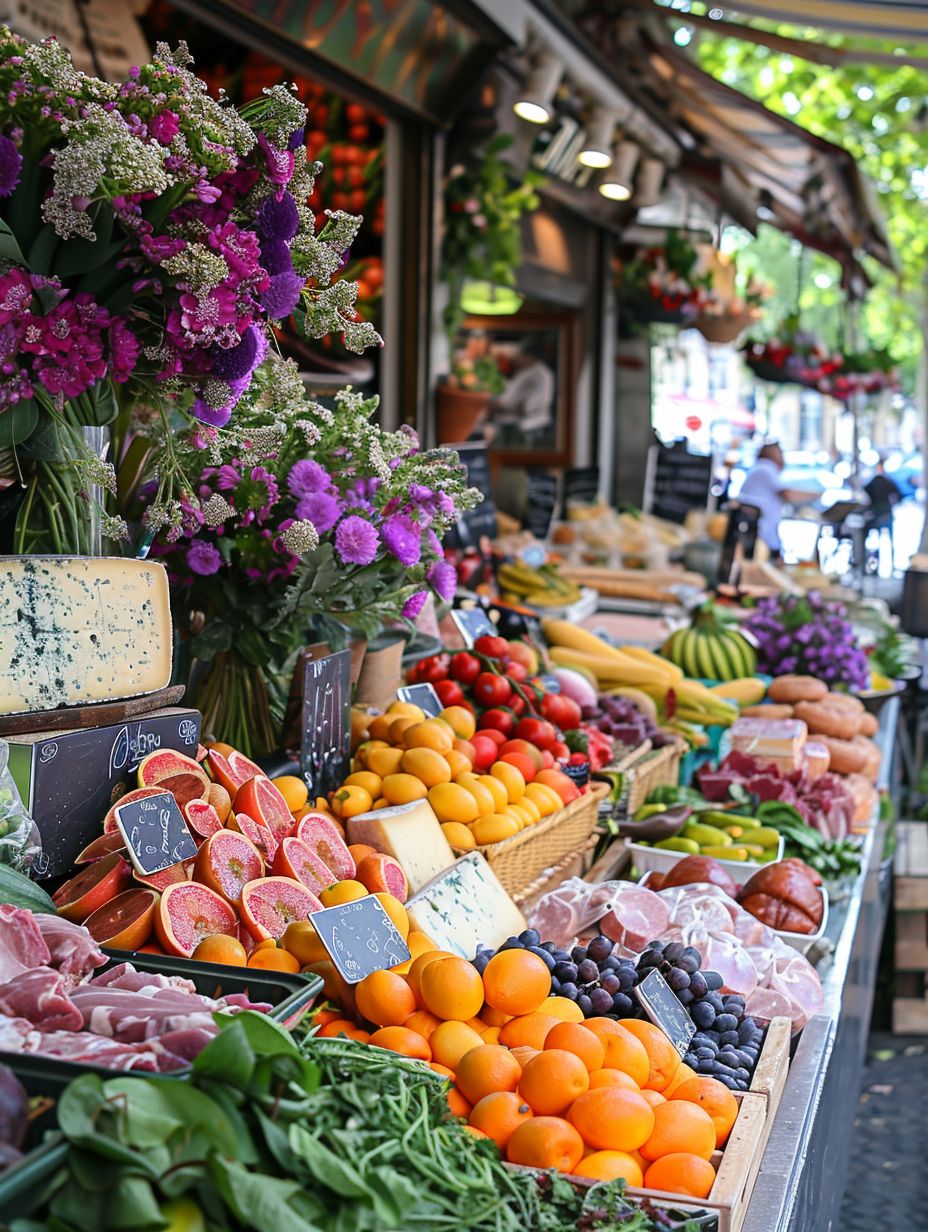
Here are some of the best French farmer’s markets in Paris and when to visit them:
Marché d’Aligre – This market is open from Tuesday to Sunday, but the best time to visit is weekends. It’s located in the 12th arrondissement and has an indoor market hall as well as many outdoor stalls selling fresh produce, cheeses, flowers, and more.
Marché des Enfants Rouges – Open Tuesday to Saturday, this is the oldest covered market in Paris located in Le Marais. It’s best to go in the mornings to get fresh bread, pastries, produce, and gourmet food stalls.
Marché Bastille – Running Thursday and Sunday mornings, this large open-air market is known for its wide selection of fresh fruits, vegetables, meats, fish, and cheeses. Get there early.
Marché Biologique des Batignolles – For organic and seasonal produce, visit this market on Saturday mornings in the 17th arrondissement. It has over 50 vendors.
Marché Boulevard de Grenelle – This Sunday morning market in the 15th arrondissement stretches along a long boulevard with stalls selling diverse produce, meat, fish, and French street food.
Marché Raspail – A very popular Sunday organic farmer’s market located in the 6th arrondissement. Come morning for the best selection.
In general, the earlier you arrive the better as things sell out fast! Weekend mornings are the liveliest. Bring cash and reusable bags to fit in with the locals.
The biggest French fresh produce market used to be located in Les Halles, nicknamed “the belly of Paris,” in the middle of the city where it stood for 800 years. In 1969, it joined forces with the La Villette meat market of Paris and moved to the south of Paris in a town called Rungis, renaming itself Marché d’Intérêt National in the process. Its opening was inaugurated by none other than French President Charles de Gaulle on March 3, 1969. The Rungis fresh food market is now the largest fresh produce market in the world, estimated to feed one-fifth of the country’s population!
The market is reserved for professionals only except on the second Friday of every month when the public can enter for a special guided tour. Pavilions include fish, meat, milk products, fruits and vegetables, and finally the flower market.
Grocery Stores
Grocery stores are one of the most convenient ways to buy fresh produce, fruits, and vegetables in France, especially in urban areas. Here are a few key ones:
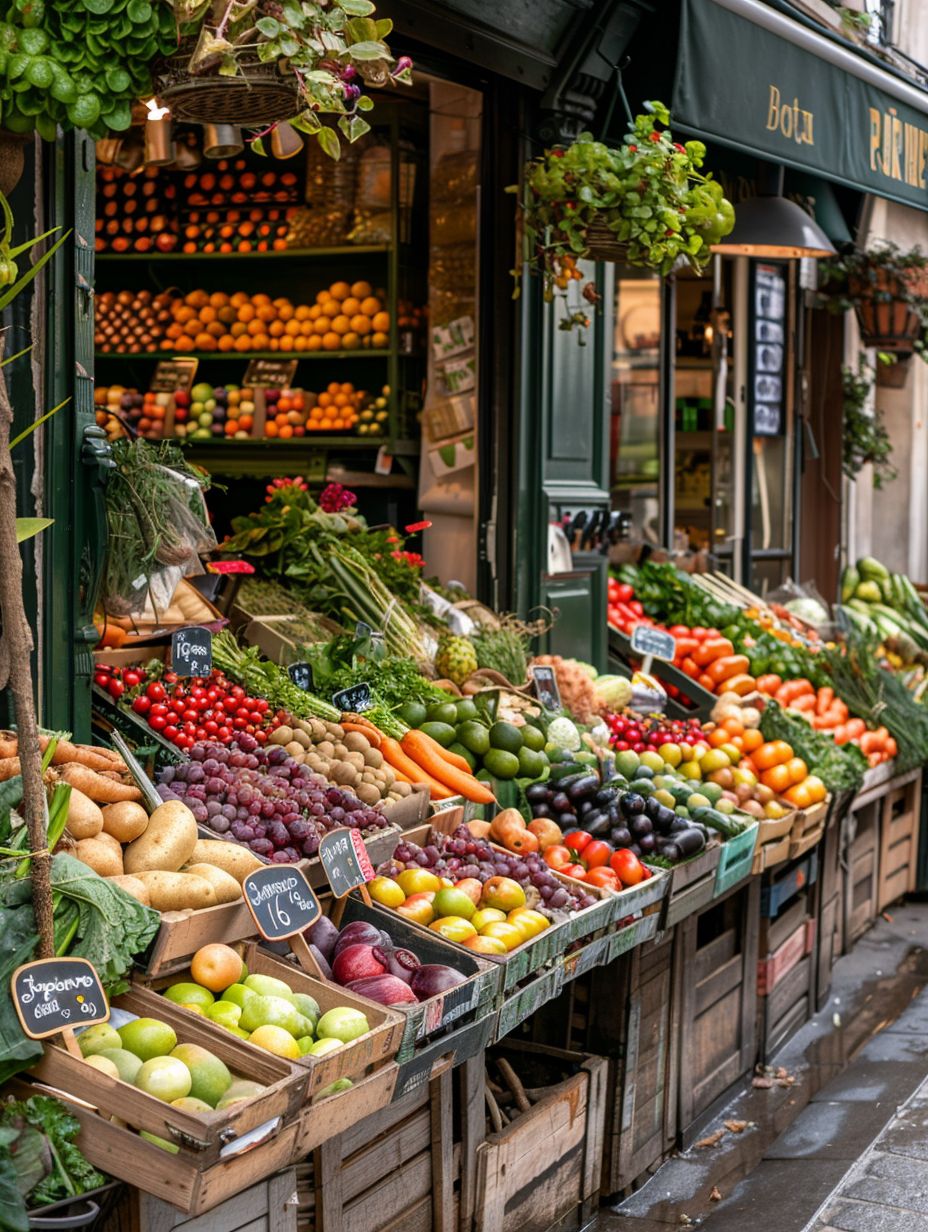
Carrefour: This is one of France’s largest supermarket chains. They offer fresh produce, both local and imported. The larger hypermarkets (Carrefour Hypermarché) usually have a vast produce section with seasonal fruits, vegetables, and even organic options.
Intermarché: Known for its commitment to sustainable farming and local produce, Intermarché is another great choice. They collaborate directly with local farmers, which ensures fresh, high-quality products.
Leclerc: This is a French cooperative society and hypermarket chain, where you can find an extensive selection of fresh produce. Leclerc is particularly known for its affordability while maintaining good quality.
Auchan: Auchan hypermarkets are found in larger cities and shopping centers. They offer a good selection of fresh fruits and vegetables, alongside other grocery items.
Franprix: Predominantly found in Paris, Franprix is a convenience store that stocks a range of fresh produce. It’s ideal for those who need to grab a few items quickly.
Monoprix: Often located in city centers, Monoprix offers a diverse selection of quality fresh produce, gourmet foods, and everyday groceries. They also have an organic range, Monoprix Bio.
Biocoop: For those who prefer organic produce, Biocoop is a leading organic food retailer in France. They focus on locally sourced, ethical, and sustainable products.
Remember that fresh produce availability often depends on the season. France values seasonal eating, which is one of the secrets behind the vibrant flavors in French cuisine. Don’t forget to ask for help if you’re unfamiliar with a certain product – store employees can often provide preparation tips or recipe suggestions.
Potager Garden
When a Parisian friend moved to the countryside, she joked about how she would certainly not become one of those countryfolk who have their own potager in the backyard!

A potager garden, also known as a “kitchen garden,” is a traditional garden style in France that has been popular for centuries. It’s similar to a container garden. The term ‘potager’ originates from the French word ‘potage’, which simply means soup. The concept of the potager garden reflects a garden that provides ingredients for soup, or more broadly, for daily meals.
The design of a potager garden involves both aesthetics and functionality. They are typically laid out in geometric patterns, often in square or rectangular plots, with symmetry and balance. But more than just being visually pleasing, a potager garden is filled with edible plants. This includes fruits and vegetables, herbs, edible flowers, and sometimes even dwarf varieties of fruit trees.
The mix of plants creates a vibrant visual display and promotes a healthy ecosystem. The diversity of plants can help control pests and diseases naturally, reducing the need for chemical treatments.
Many French people do indeed have potager gardens. They can be found in rural areas, suburban homes, and even in small city apartments in the form of container or balcony gardens.
The French have a strong culture of cooking at home, and the idea of growing your own fresh ingredients fits perfectly into this ethos. This tradition of maintaining a potager garden has seen a resurgence in recent years as people globally are becoming more interested in organic gardening and farm-to-table cooking.
In essence, a potager garden symbolizes the heart of French cuisine – an emphasis on fresh, locally sourced, and seasonal ingredients, which also happens to be a sustainable and enjoyable hobby. It’s not just a garden; it’s a way of life!
